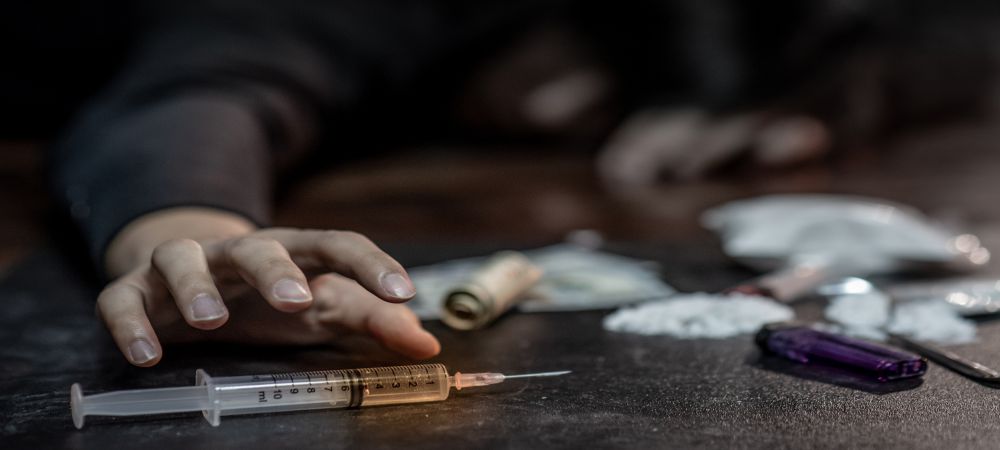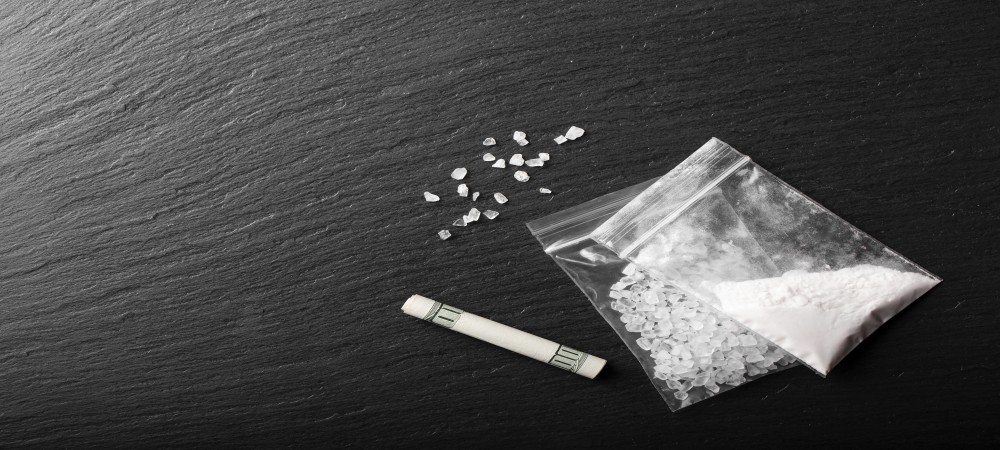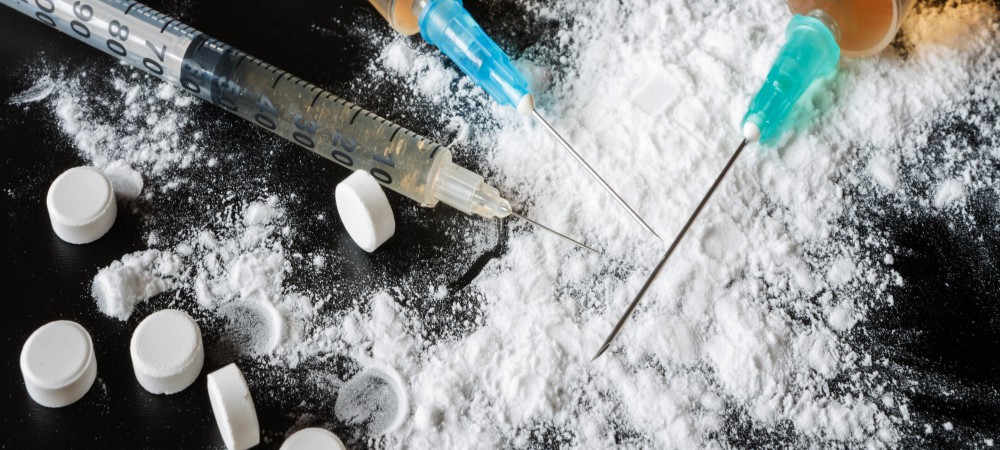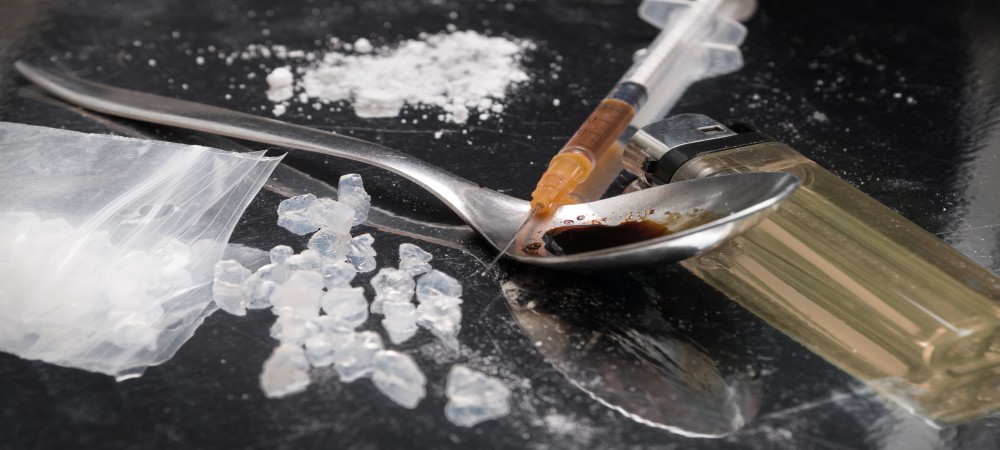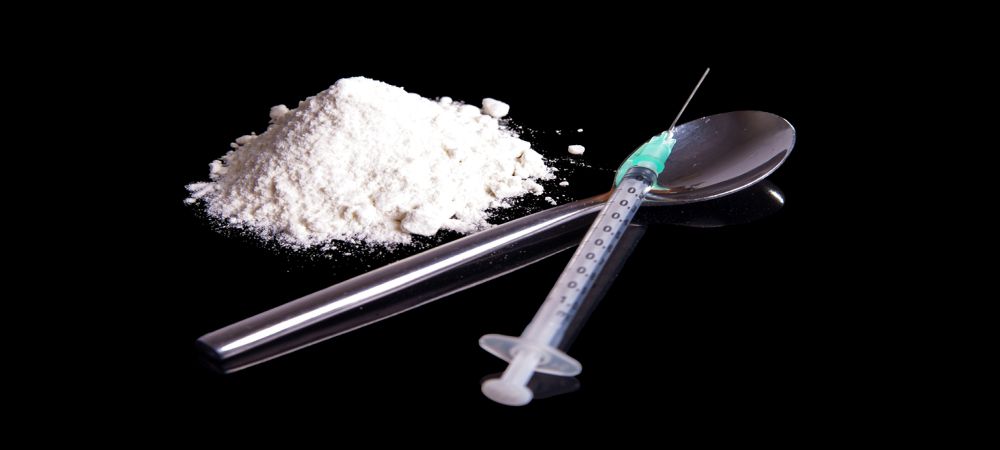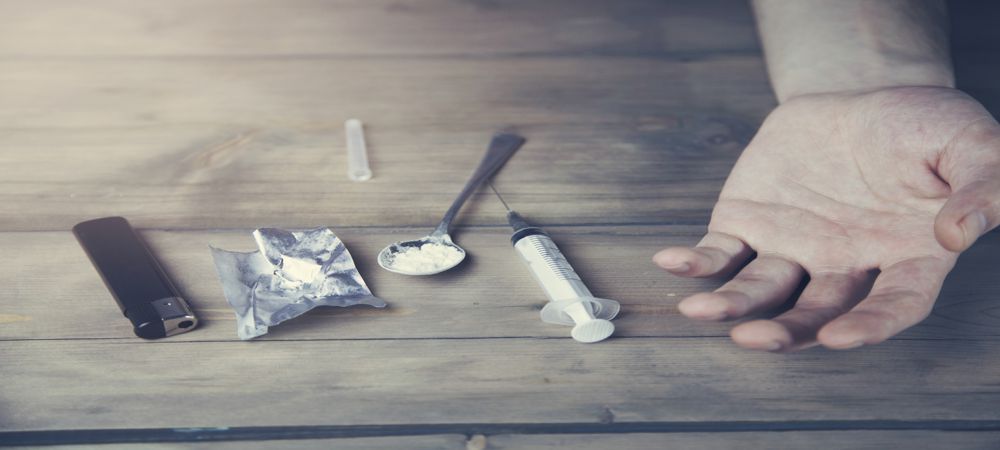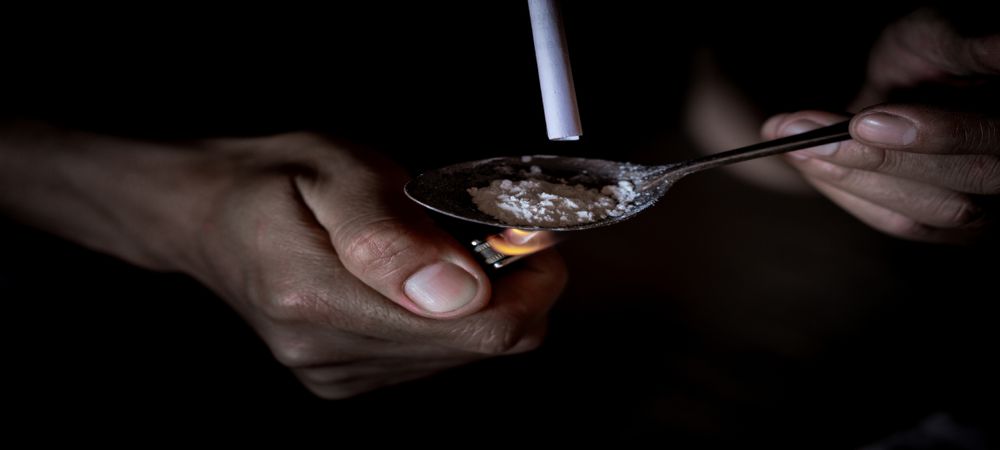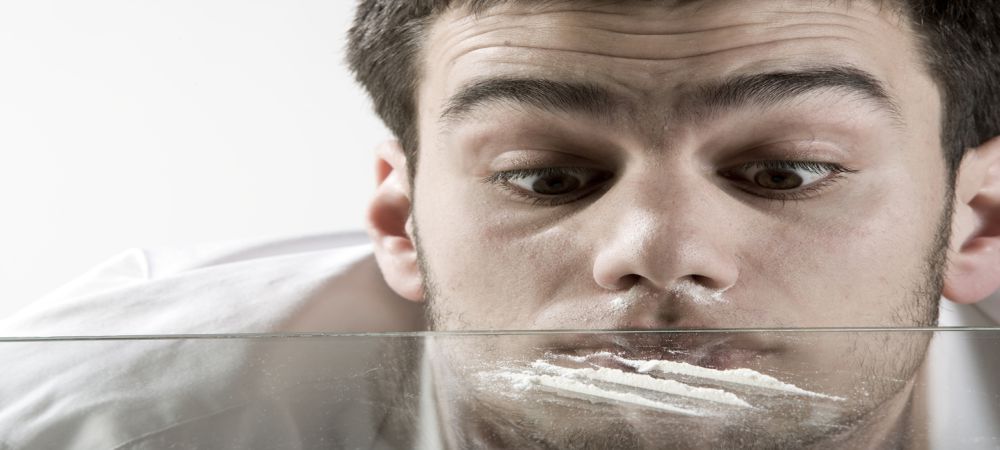Heroin is a class of opioids with origin from morphine. Its mode of consumption often includes sniffing, snorting, smoking, and injecting. Heroin addiction is a disorder that includes mental and behavioural changes as a result of excess heroin use.
Heroin is one of the swiftest acting and commonly abused substances of opiates. According to scientists, we can classify heroin as a semi-synthetic opioid derived from poppy plant extracts.
Often, heroin use starts with the casual misuse of a prescribed opioid. A person may then switch to heroin because of its lower cost, despite the greater danger of using it.
Someone who uses heroin regularly will end up needing more doses daily to attain the same effect. This is known as tolerance. Also, using this drug often means you’ll need more quantity for your body to function properly. This is known as physical dependence.
Heroin abuse can be difficult to talk about, even with a loved one. Individuals who experience addiction aren’t always honest about their drug abuse. Most may not be aware of how far things have gone out of control. Though it may be difficult, having a conversation about heroin addiction can potentially save your life.
If you or someone you care about is battling heroin addiction, pay close attention to their lifestyle, habits, and characteristics. This may help you uncover the truth and understand the depth of the problem.
Identifying the symptoms of heroin addiction is a significant first step toward a better healthy lifestyle. Here, we’ve put together everything you need to know about heroin addiction; the symptoms, and treatment options.
What is Heroin?
Heroin is an opioid drug made from naturally-occurring morphine taken from the seed pod of several opium poppy plants. These plants are often grown in areas like Southwest Asia, Southeast, Colombia and Mexico. Heroin can come in the form of a brown or white powder, or a black sticky form known as black tar heroin. Other popular names for heroin include smack, horse, hell dust, big H, etc.
Furthermore, pure heroin is a white powder with a bitter taste that widely originates in South America, and dominates the North American markets. It also extends to some extent, Southeast Asia and markets east of the Mississippi River. Highly pure heroin can be snorted or smoked and is typically more appealing to new users. This is because it alleviates the stigma relating to injection drug use.
Also, the Black tar heroin is considered sticky because it’s hard like coal and looks like the roofing tar. This type of heroin is popularly produced in Mexico and sold in the U.S. areas around the west of the Mississippi River.
The dark colour of black tar heroin results from its crude processing methods. As a result, it may contain impurities. Impure heroin is often dissolved, diluted, and injected into muscles, under the skin, or veins.
What does heroin look like?
In its pure form, heroin is a fine white powder that is bitter to taste and readily dissolves in water. In the streets, the colour of heroin varies according to the additives.
Substances like sugar and powdered milk are added to increase its street weight and boost retail sales. In recent times, fentanyl as an additive can increase heroin’s potency. According to the CDC, fentanyl is one hundred times more deadly than morphine.
How Does Heroin Make You Feel?
There are several ways to use heroin. Injections, for instance, offers a more immediate feeling, unlike other methods. Some of the other ways people use heroin include:
- Injecting into a vein, muscle or under the skin
- Snorting or sniffing
- Smoking or inhaling through a straw (also known as chasing the dragon). This is a process of systematically heating the substance on an aluminum foil and inhaling the vapours through a tube.
However, the choice of how to use heroin depends mostly on the purity of the drug and the preferences of the user. When you consume heroin, it forces your brain to produce dopamine — the feel-good hormone. However, this forcefully generated dopamine also creates some general effects on the body.
Generally, when heroin enters your brain, it sticks to molecules on cells known as opioid receptors. These receptors are found in several parts of the body and brain. Most especially areas involved in the perception of pressure and pain. Also, this may include the part of the brain that regulates breathing.
If you’re a new user, you may experience the general heroin side effects like vomiting and nausea. However, the desired effects involve detachment from emotional and physical well-being, feelings and pains. Other effects consist of slow breathing, sweating, itchiness, and pinpoint pupils. Regular usage results in loss of libido and sexual interest missed or irregular periods in women, and constipation.
In general, the way heroin affects you usually depends on several factors, including:
- How often you consume heroin and the quantity
- Your age
- Your environment
- Whether or not you’re using it with other substances including alcohol
- How long you’ve been using the drug
- Your method of consumption
What Happens During Heroin Addiction?
Essentially, symptoms of heroin addiction can appear immediately after last use or between six 6 to 30 hours later. However, this may vary depending on how long you’ve been taking the drug. Furthermore, you may experience prolonged symptoms even after 72 hours of your last dose. These symptoms can extend up to a week, depending on your level of addiction.
Additionally, the symptoms you’ll experience often depend on the addiction level you’re experiencing. Also, several factors may dictate the timeline at which you’ll go through the heroin addiction symptoms. This is why everyone experiences addiction symptoms differently. Notwithstanding, there’s usually a timeline for work progression and symptoms.
The Physical Symptoms of Heroin Addiction

Early signs of heroin addiction usually start between the first 24 hours after quitting the usage. The symptoms include:
- Dry mouth
- Flushed skin
- Constricted pupils
- Slow breathing
- Falling asleep suddenly
- Vomiting
- Itching
- Loss of self-control
- Nausea
- Constipation
- Slurred speech
- Yawning often, etc.
Other Symptoms of Heroin Addiction
Other symptoms, which can be more intense, start after the first day or beyond. They include:
- Behavioural changes, like sudden aggression or secrecy
- Money issues, such as missing money or needing more and more money without any logical reason
- Problems at school or work
- Changes in appearance or decline in personal hygiene
- Confused thinking or disorientation
- Feelings of heaviness
- Difficulty making decisions
- Memory loss
Individuals who use heroin regularly usually need stool or laxatives softeners because the drug can cause constipation.
Related Article: The Long Term Effects of Heroin Abuse
Heroin Addiction: The Side Effects of Heroin
Heroin users have described the drug’s high as intense. When someone injects heroin, they often experience a “rush” from the drug reaching the brain so quickly.
The rush from intravenous heroin use lasts about two minutes. In terms of pleasure, intravenous users have likened the rush to an orgasm. As heroin travels through the bloodstream, the high lasts for four to five hours.
The effects of heroin can seem harmless to those who are experimenting with the drug. Although it may produce some dizziness and drowsiness, these effects feel enjoyable. Unlike substances such as alcohol or ecstasy, there generally isn’t a hangover or comedown from initial heroin use, which is an attractive benefit to new users.
What may seem like “harmless” or occasional heroin use often devolves into heroin addiction because tolerance builds quickly. Eventually, the user cannot feel normal without taking the drug because their brain cannot produce natural amounts of dopamine on its own.
As the user increases their doses, they are at a greater risk of a fatal heroin overdose. At this point, it’s best to undergo heroin detox and addiction treatment in a controlled, medical facility.
Short-term Side Effects of Heroin Addiction
Soon after injection or inhalation, heroin crosses the blood-brain barrier. In the brain, heroin is converted to morphine and binds rapidly to opioid receptors. Abusers typically report feeling a surge of pleasurable sensation, a “rush.” The intensity of the rush is a function of how much drug is taken and how rapidly the drug enters the brain and binds to natural opioid receptors.
Heroin is particularly addictive because it enters the brain so rapidly. With heroin, the rush is usually accompanied by a warm flushing of the skin, dry mouth, and a heavy feeling in the extremities, which may be accompanied by nausea, vomiting, and severe itching.
After the initial effects, abusers will be drowsy for several hours. Mental function is clouded by heroin’s effect on the central nervous system. Cardiac function may also slow.
Breathing is also severely slowed, sometimes to the point of death. Heroin overdose is a particular risk on the street, where it is impossible to gauge the purity of the drug.
Long-term Side Effects of Heroin Addiction
If you indulge in using heroin over the long-term, you may develop a tolerance to it. Essentially, tolerance means you will always need to increase your doses to attain the necessary pain relief you want. These long-term effects are mostly harmful, especially at the point of extreme usage.
One of the most detrimental long-term effects of heroin is addiction itself. Addiction is a chronic, relapsing disease, characterized by compulsive drug seeking and use, and by neurochemical and molecular changes in the brain. Heroin also produces profound degrees of tolerance and physical dependence, which are also powerful motivating factors for compulsive use and abuse.
As with abusers of any addictive drug, heroin abusers gradually spend more time and energy obtaining, as well as, using the drug. Once they are addicted, the heroin abusers’ primary purpose in life becomes seeking and using drugs. The drugs literally change the way you think.
Physical dependence develops with higher doses of the drug. With physical dependence, the
body adapts to the presence of the drug and withdrawal symptoms occur if use is reduced abruptly. Withdrawal may occur within a few hours after the last use.
Symptoms of withdrawal include:
- Restlessness
- Muscle
- Bone pain
- Insomnia
- Diarrhea
- Vomiting
- Cold flashes with goosebumps (“cold turkey”)
- Leg movements.
Major withdrawal symptoms peak between 24 and 48 hours after the last dose of heroin and subside after about a week. However, it is also possible to experience persistent heroin withdrawal symptoms for many months. Heroin withdrawal is never fatal to otherwise healthy adults. However, it can cause death to the fetus of a pregnant addict.
At some point during continuous heroin use, a person can become addicted to the drug. Sometimes addicted individuals will endure many of the withdrawal symptoms to reduce their tolerance for the drug so they can again experience the rush.
Physical dependence and the emergence of withdrawal symptoms were once believed to be the key features of heroin addiction. We now know this may not be the case entirely, since craving and relapse can occur weeks and months after withdrawal symptoms are long gone.
We also know that patients with chronic pain who need opiates to function (sometimes over extended periods) have few if any problems leaving opiates after their pain is resolved by other means.
Some of the long-term side effects of heroin addiction include:
- Insomnia
- Skin infections like cellulitis and abscesses
- Collapsed veins
- A higher chance of getting Hepatitis B, Hepatitis C, and HIV/AIDS.
- Mental disorders
- Kidney and liver disease
- Lung diseases like pneumonia and tuberculosis
- Menstrual problems and miscarriage, etc.
Heroin Addiction Treatment and Recovery
Generally, heroin addiction treatment includes altering deeply rooted behaviours. It involves therapy sessions to find out the behavioural triggers that lead up to heroin abuse.
There’s also the need for medical detox and treatment to help you back to full health. Depending on your unique heroin addiction treatment needs, your treatment expert may recommend any of the following:
In-patient treatment
In-patient therapy is a type of treatment where you reside at the treatment centre. In-patient treatment is often helpful for people suffering from severe addiction. Also, it’s useful for those who struggle with specific challenges of mental wellbeing.
Undertaking your recovery in a rehab centre helps you avoid influences and temptations that provoke daily heroin abuse. Typically, living in a serene environment will aid your recovery faster.
Licensed in-patient rehab facilities often provide 24-hour intensive care and support. They also combine 3 stages of recovery into their rehab programs, i.e. growth, reflection, and detox. In-patient facilities focus on teaching you how to adopt a substance-free lifestyle and maintain sobriety. This plan typically involves a step-down method to help your transition from in-patient care to group counselling or behavioural therapies.
Group therapy
Group therapy is a specific form of counselling used to treat psychological disorders, including heroin abuse and addiction. Typically, it involves regular sessions where therapists work with several individuals receiving treatment for the same health issue.
Individuals who participate in a therapy group usually take turns to share their feelings, struggles, goals, and experiences. Sometimes, therapy groups may focus solely on a specific recovery topic. Examples include recognizing and avoiding triggers, handling complicated family, peer, work, or other interpersonal relationships.
One of the most significant benefits of group therapy for addiction recovery is that groups give you the ability to bond with others. It also gives you an avenue to build a support system to connect with once you leave treatment.

Behavioural therapy
Several effective behavioural therapies for heroin addiction are available for both residential and outpatient settings. Typically, approaches such as Cognitive Behavioural Therapy (CBT) and contingency management are effective treatments for heroin use disorder. Most especially when delivered simultaneously with medications.
Generally, CBT aims at helping patients modify their behaviours and expectations. Essentially, it alters everything relating to drug use and helps devise coping skills for different life stressors.
On the other hand, contingency management uses a point-based procedure in which patients earn certain “points” based on their negative drug tests. The points are usually exchangeable for items that encourage leading a healthy lifestyle. The reward also extends to other activities like attending and participating in addiction counselling sessions, or for taking your medications as prescribed.
Other behavioural therapies include:
- Motivational Enhancement Therapy (MET) uses different approaches to make the most of your readiness to change your behaviour and enter treatment.
- Family therapy helps individuals especially young people with drug use disorder, as well as their families. It’s a process of addressing the influence on drug use patterns and improving overall family functioning.
The Principles of Effective Treatment of Heroin Addiction
Research indicates that the first line of treatment for heroin or other opioids addiction is medication. Usually, the best way to perm ambient sobriety is combining medication with some form of counselling and behavioural therapy.
Furthermore, medication is hugely important for people going through drug detox. Though detoxification isn’t the same as addiction treatment, it helps set the pace for successful recovery. However, detoxification without continuing heroin addiction treatment often leads to the resumption of drug use.
How to Ensure The Successful Treatment of Heroin Addiction
Different forms of medications may be effective at different stages of treatment. However, maintaining sobriety and a healthy post-addiction treatment requires more. Some of these include; treating withdrawal, staying in treatment, and avoiding relapse.
Treating withdrawal
When patients first stop using drugs, they can experience various physical and emotional symptoms, including restlessness or sleeplessness, as well as depression, anxiety, and other mental health conditions. Certain treatment medications and devices reduce these symptoms, making it easier to stop drug use.
Staying in treatment
Some treatment medications are useful in helping your brain adapt gradually to the absence of the drug. These treatments act slowly to help prevent drug cravings and have a calming effect on your body. They can help patients focus on counselling and other psychotherapies related to their drug treatment.
Preventing relapse
Science has taught us that stress cues linked to drug use such as people, places, things, and moods, and contact with drugs are the most common triggers for relapse.
This is why behavioural therapy sessions are important. During these sessions, you can develop coping mechanisms to help you cope and manage relapse triggers.
Related Article: Heroin Addiction: The Obvious Signs to Look Out For
That’s All You Need To Know About Heroin Addiction
If you’ve been following us till this moment, you’re welcome. By now, you should know more about heroin addiction than you did before this article. We tried to cover as many important details as possible without risking an information overload.
If there is any part of this article you need to pay close attention to, it’s the section on ‘what happens during heroin addiction” and “heroin addiction treatment and recovery.” Those sections are essential to staying sober and staying drug-free.
We are aware it’s not easy to stop using heroin on your own. This is why it’s hugely important to speak with a professional about heroin addiction. Here at 1000 Islands Rehab Centre, our heroin addiction experts will listen to you and develop a custom plan for your treatment. Contact us today!
